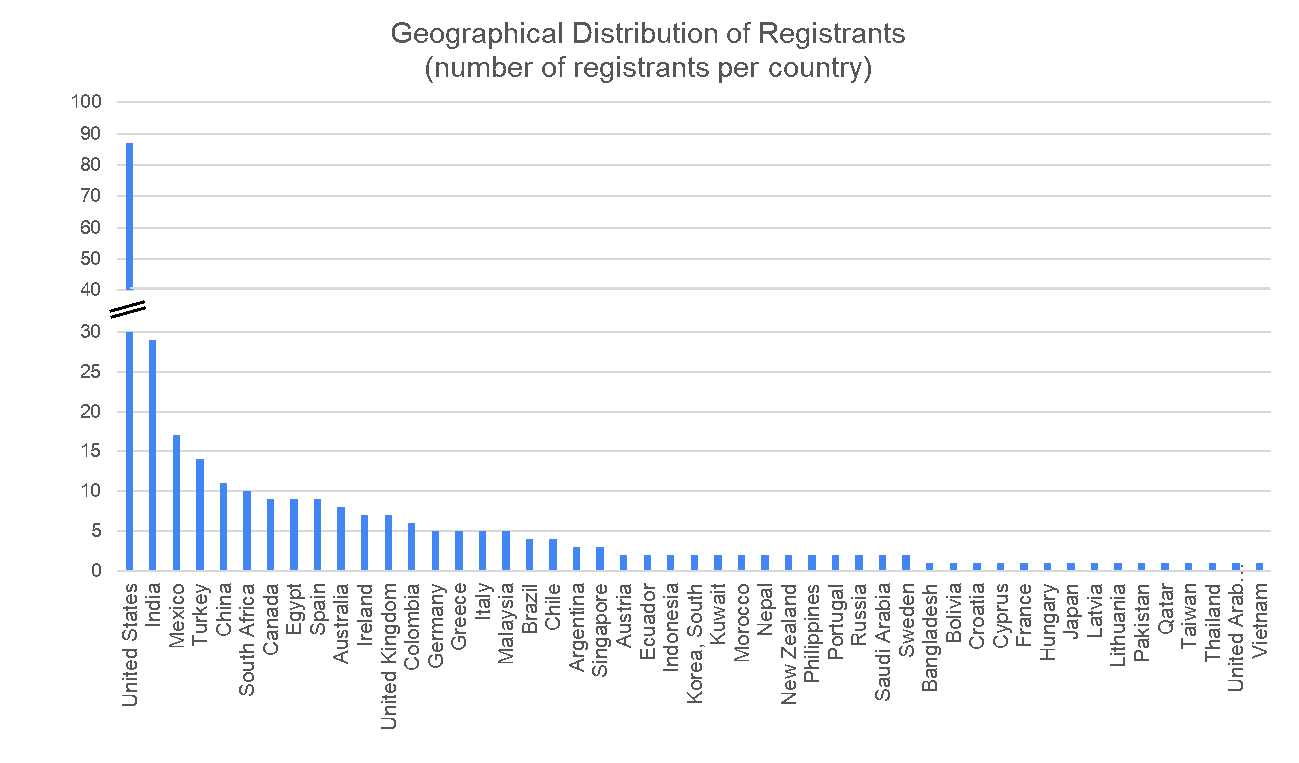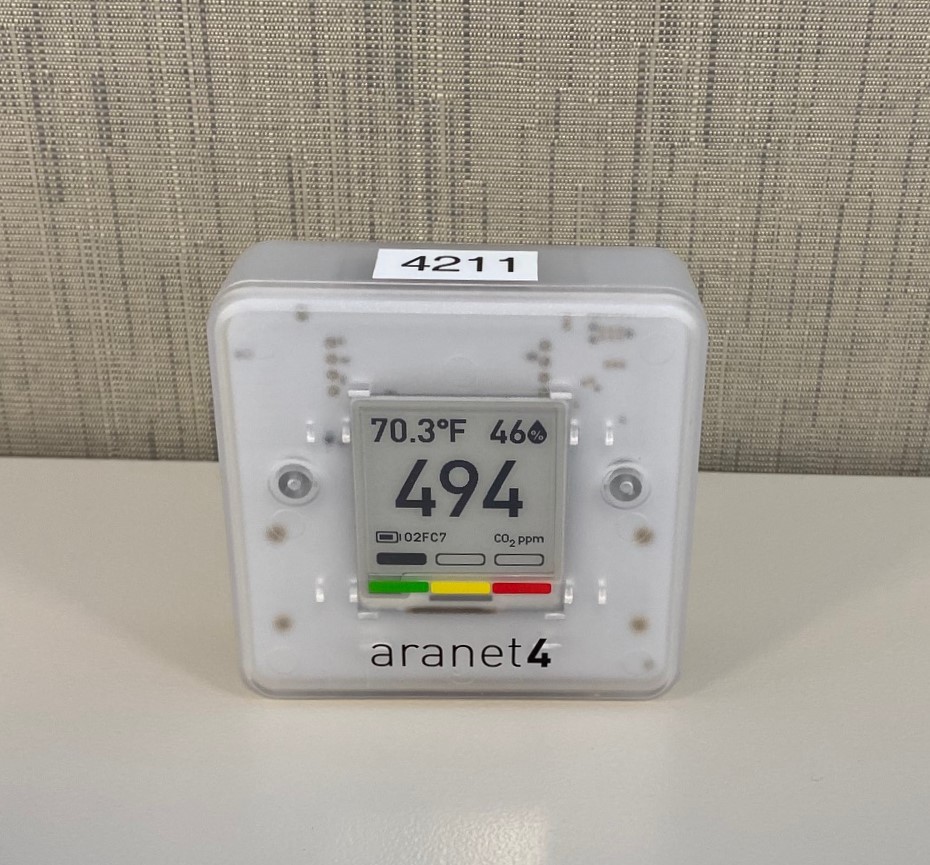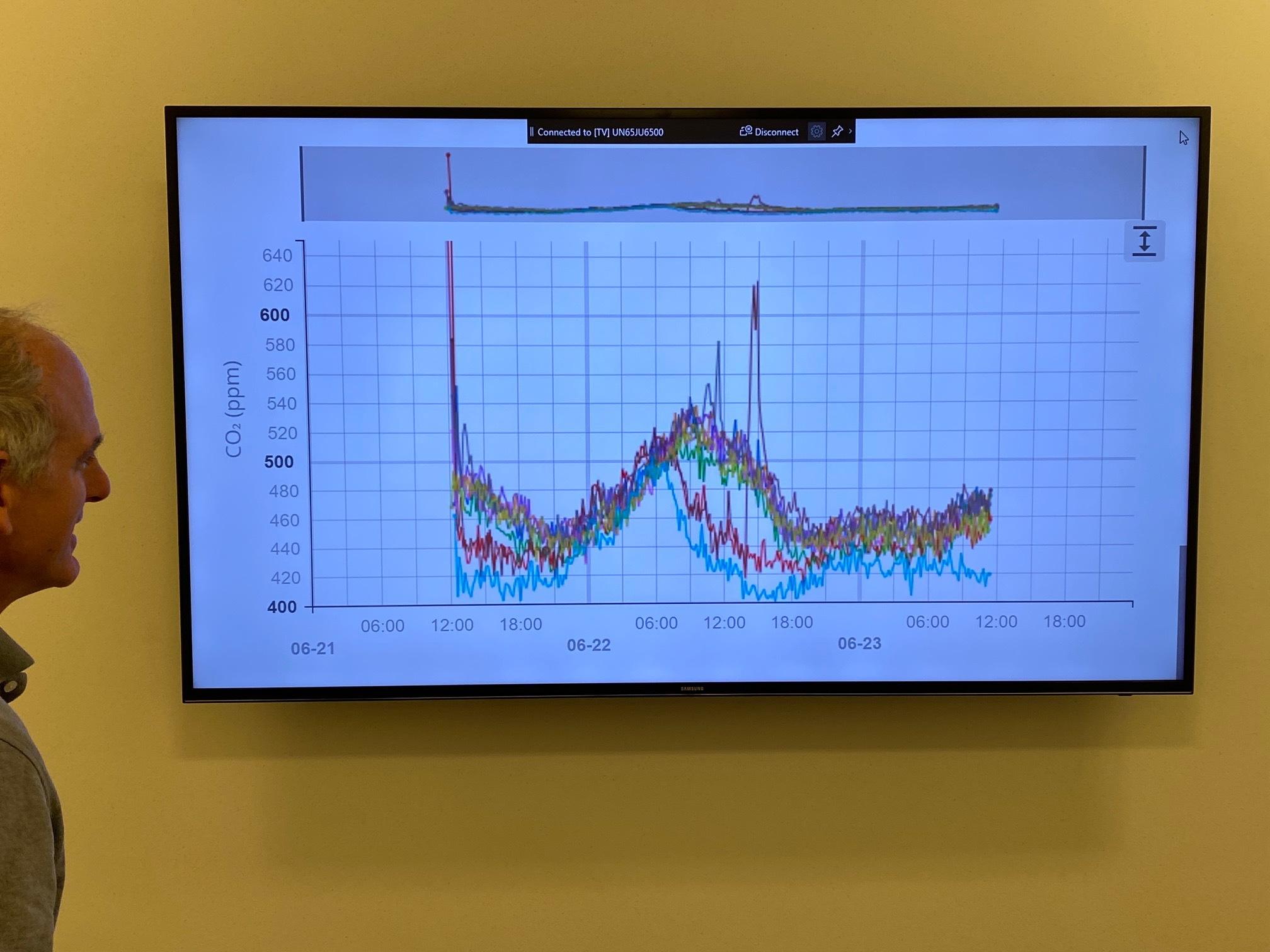ARL Weekly News – June 24, 2022
| Recent Events |
Congressional Hearing on Federal Programs for Measuring Greenhouse Gas Sources and Sinks
The House of Representatives Science, Space and Technology’s Subcommittee On Environment met Thursday June 23 to hear testimony on Assessing Federal Programs For Measuring Greenhouse Gas Sources And Sinks. Among the federal agencies represented, NOAA was represented by Dr. Ariel Stein of GML and ARL. The hearing was led by Chairwoman Haley Stevens (D-MI) of the Subcommittee on Research and Technology and included representatives from NIST, NASA, and the EPA.
In addition to written testimony which provided a comprehensive overview of NOAA’s efforts, Dr. Stein provided an overview of NOAA’s Mauna Loa Observatory which provides long-term atmospheric observations that serve as a climate baseline and record. As the cornerstone of the Greenhouse Gas Monitoring Network, Mauna Loa provides essential information to develop products and tools that are used by a variety of industries. Cooperation of a number of federal agencies is a key to a comprehensive understanding of the sources and sinks of GHG emissions and thus providing relevant information to decision makers.
Issues and questions raised during the hearing included the standards for measurement, the impact of farming and natural gas industries on GHG emissions, the need for global observations, and the actionable information provided by NOAA.
Written testimony from Dr. Stein
2022 Annual HYSPLIT Workshop
The 2022 Annual HYSPLIT Workshop was held online June 14-17. A pre-workshop day (Monday June 13) was devoted to assisting participants with model installation, in both group and one-on-one sessions. The Workshop was hands-on, with participants following along as the instructors illustrated the model’s underlying principles and applications, based primarily on the HYSPLIT Tutorial. There was about 5 hours of instruction each day. Recordings were made of each day’s session and were made available to all participants. A Workshop Web Page communicated key information to participants before and during the event, including links to handouts, documentation, and recordings.

International representation among 2022 HYSPLIT Workshop attendees.
About 300 people from around the world registered for the event. The 300 registrants represented 49 different countries, with the most from the U.S. (87), India (29), Mexico (17) and Turkey (14) (see Figure below). Registrants were from governmental agencies (international, national, state, and local), non-governmental organizations, academia, and commerce.
Of the 300 registrants, about 225 indicated that they planned to participate in the live-streaming event and about 75 registrants indicated that they planned to participate by only watching the recordings asynchronously, primarily because they lived in time-zones that made it particularly impractical to attend the live event. About 70% of the live-stream registrants (160 people) attended the live stream event, a relatively high level of “follow through” for an event such as this. Some participated for the entire event while some attended only particular sessions that were of most interest to them.
ARL Director Ariel Stein welcomed participants to the event. ARL IT team members Fred Shen and Rick Jiang provided superb support behind the scenes in carrying out the all-virtual event. The ARL-ASMD HYSPLIT team (Mark Cohen, Sonny Zinn, Tianfeng Chai, Alice Crawford, Miguel Cahuich, HyunCheol Kim, Chris Loughner, and Fantine Ngan) rotated throughout the week among different roles, including instructor, backup instructor, moderator, answering questions submitted to the Go-to-Webinar interface, and answering questions submitted to the HYSPLIT Forum. This year’s event was the first Annual Workshop to be conducted without Roland Draxler (ARL, retired) as the primary instructor. A Post-Workshop Survey has been distributed to collect participant’s feedback about the event. With the event recordings and all pre- and during-workshop materials available on the Workshop Web Page, anyone can access the full Workshop content, on an ongoing basis, if they wish to learn about the HYSPLIT model.
Fugitive Natural Gas Emissions in Urban Environments Workshop
On June 15th and 16th Xinrong Ren and Phillip Stratton attended a workshop on quantifying methane emissions across natural gas infrastructure in urban environments. Results from their recent mobile survey’s in Washington DC and Baltimore were presented to participants from other federal agencies, universities, industry representatives, and non-profit organizations. Xinrong led a breakout session on whole-city observations and the methodologies used to quantify city scale emissions. The purpose of the workshop was to develop a white paper on viable approaches to better quantify the contribution of fugitive emissions from various natural gas components and the relative proportion of pre- and post-meter leakage.
Low Cost CO2 sensors installed at ASMD.
The ASMD Chemistry Group installed a network of low-cost CO2 sensors in ASMD’s office suite at the NOAA Center for Weather and Climate Prediction (NCWCP) in College Park, MD. The Wi-Fi enabled Aranet4 sensors are manufactured by SAF North America, LLC of Aurora, CO and provide continuous measurements of temperature, pressure, relative humidity, and CO2 concentrations. Data from the 10 sensors placed around the ASMD office space, library, Plume Room, copy room, and Chem Lab are relayed to a base station, logged, and graphed on the main display monitor at the ASMD entrance. Indoor CO2 levels can be used as an assessment of overall building ventilation, an important tool to minimize potential exposure to the SARS-CoV-2 virus and other airborne pathogens.


Texas Tech Visit
Temple Lee traveled to Lubbock, Texas from 21-23 June to serve on the thesis committee for an M.S. student in the atmospheric sciences program at Texas Tech University. During his visit, Temple also met with several other colleagues in the department to enhance collaborations between ARL and Texas Tech.
| ARL Interns |
Annabelle Pham, Partnership for Public Service
Annabelle is a student at The George Washington University (GWU), School of Business Washington, DC working on a Bachelor of Arts in Business Economics & Public Policy, with a minor in Statistics. Her interests include altruism, corporate social responsibility, education, ethics, public service, and volunteerism.
Norman Urbanek, NOAA Pathways Internship.
Norman Urbanek began a NOAA Pathways Internship working with the HYSPLIT modeling team at ASMD. Norman will be entering his senior year at North Carolina State University next fall majoring in Environmental Technology. For the past 2 years, he has been conducting research on assessing disparities in hazardous air pollutant emission exposures across the US among different demographic groups. In his work at ARL, he plans to extend this research to include dispersion modeling using the HYSPLIT model. The HYSPLIT team is looking forward to working with Norman in this important Environmental Justice research. (norman.urbanek@noaa.gov; mark.cohen@noaa.gov)
Nick Clark, M.S. candidate from Texas Tech University
On 5 July, Nick Clark, an M.S. candidate from Texas Tech University, will begin a four-week internship at ATDD, working under the direction of Temple Lee and Travis Schuyler. During Nick’s internship, he will work on the development and implementation of a small uncrewed aircraft systems (sUxS) motion-removal algorithm. The development of this algorithm is required to correct for errors associated with the motion of sUxS to provide the required fidelity in vertical wind speed measurements to enable reliable sensible and latent heat fluxes from sUxS. The ability to retrieve this information is critical for using sUxS to scale surface point observations to model-relevant scales and for developing new surface-layer and boundary-layer parameterizations.

